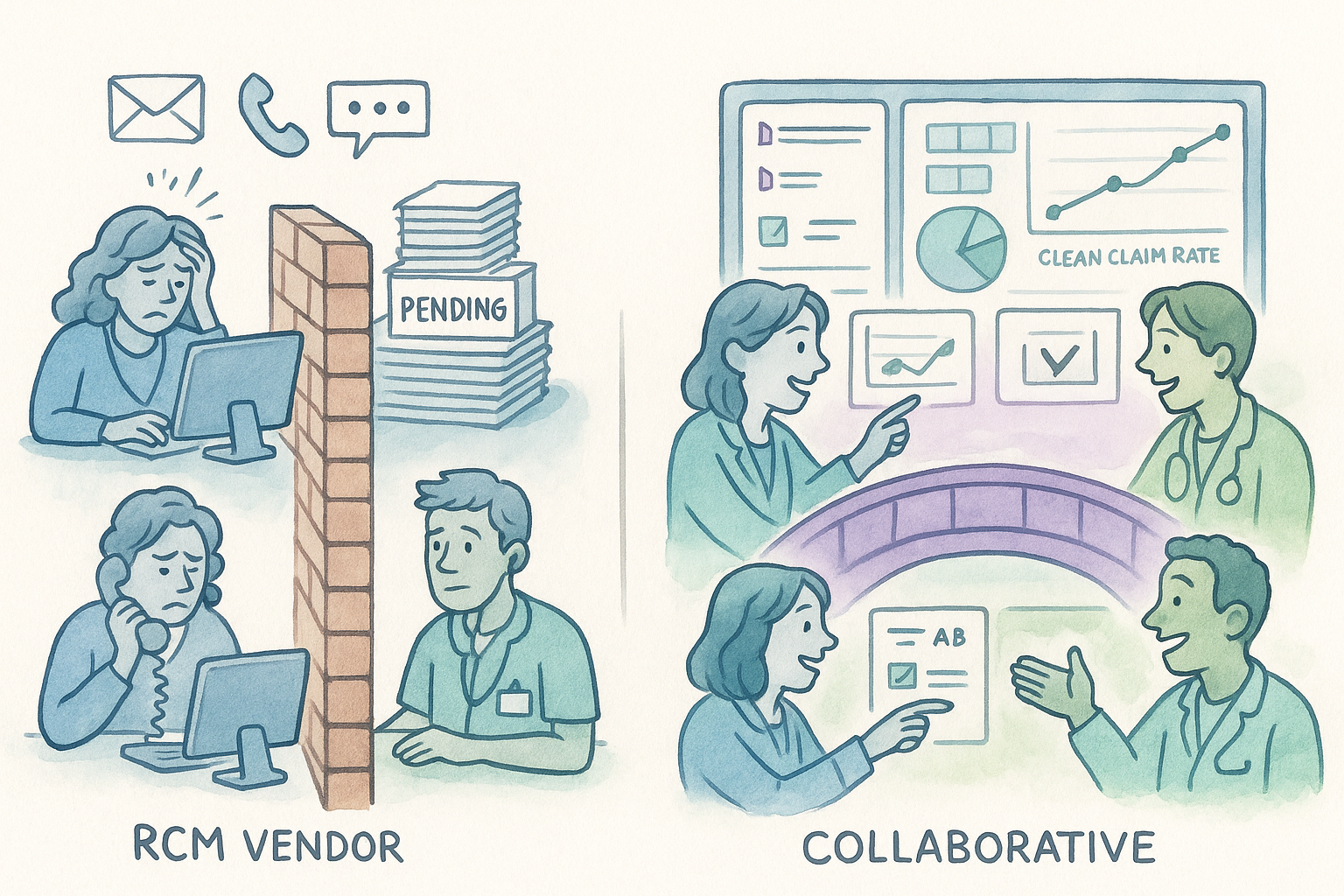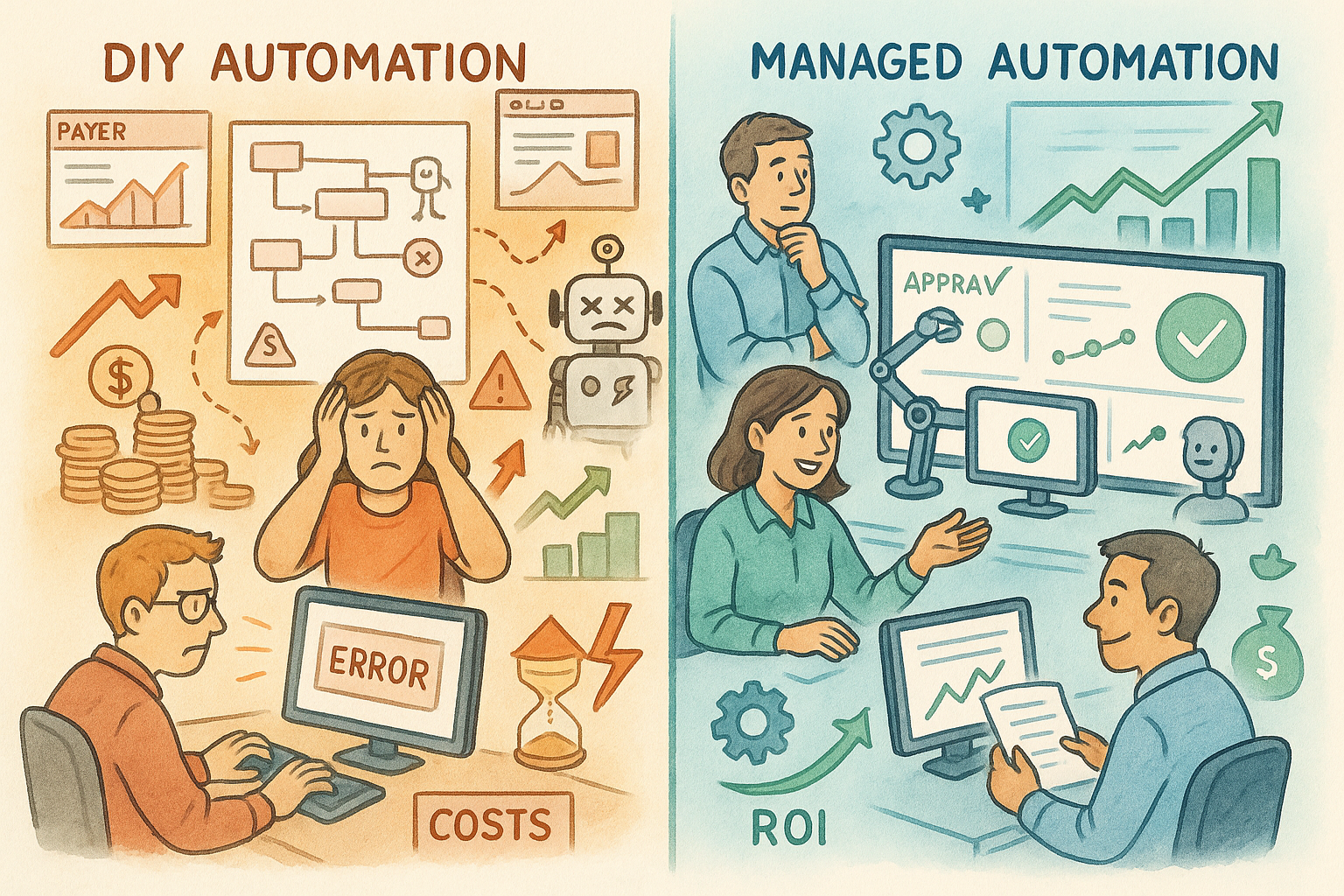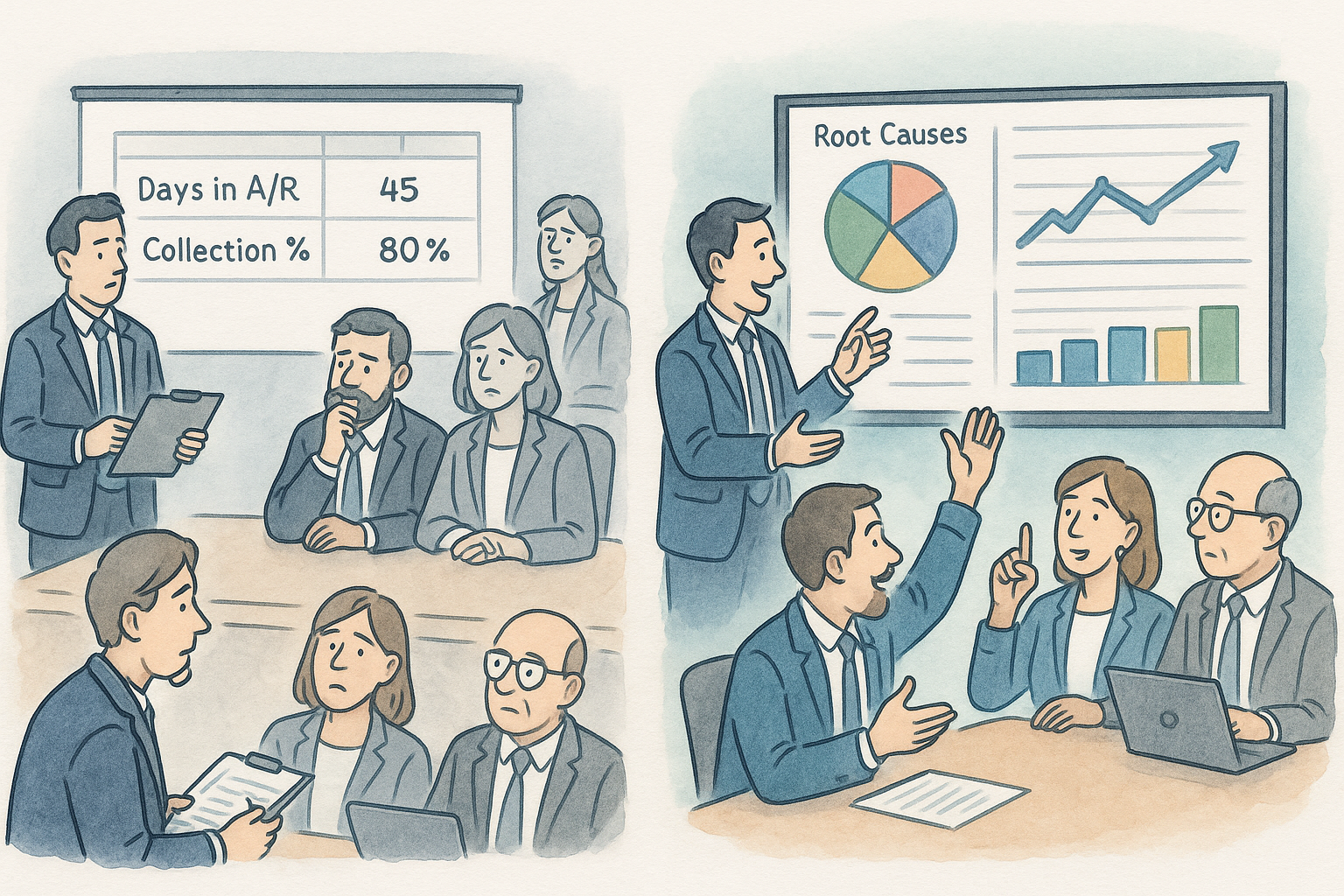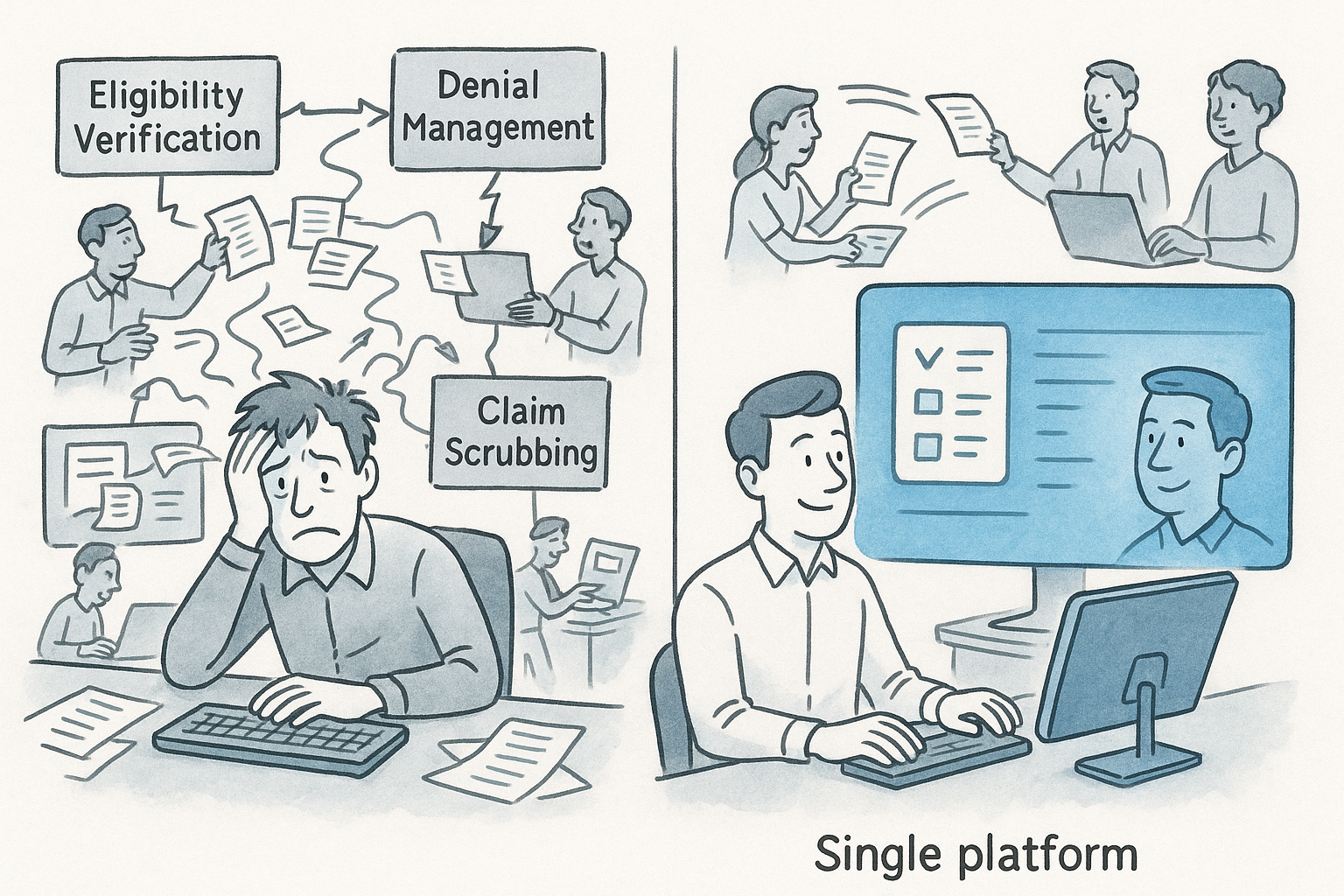The revenue cycle management industry is facing an unprecedented staffing challenge. RCM vendors across the country report struggling to maintain adequate staffing levels amid rising competition for qualified personnel, increasing complexity of the work, and shifting workforce expectations.
A recent survey found that 76% of RCM leaders consider staffing to be their most significant operational challenge—more pressing than technology limitations or changing payer requirements. This crisis is particularly acute for vendors maintaining onshore operations, where competition from other industries offering higher wages has shrunk the available talent pool.
The Perfect Storm: Understanding Today’s RCM Staffing Challenges
Multiple factors have converged to create what many industry leaders describe as a “perfect storm” in revenue cycle staffing:
Shrinking Talent Pool
The specialized knowledge required for revenue cycle work—understanding medical coding, payer requirements, denial management, and clinical documentation—limits the available candidate pool. Traditionally, RCM vendors could train motivated individuals without healthcare experience, but rising complexity has made this approach increasingly difficult.
Wage Competition
RCM staff with experience in medical billing and coding now have expanded opportunities in adjacent industries offering remote work and higher compensation. Healthcare providers themselves are also competing for the same talent, often with more robust benefits packages than third-party vendors can provide.
Complexity and Burnout
The increasing sophistication of payer denial strategies, growth in prior authorization requirements, and expansion of Medicare Advantage plans have all made RCM work more complex and potentially more stressful. As one operations manager told us, “What used to be straightforward claim submission now requires specialized knowledge across dozens of payer-specific requirements.”
Remote Work Expectations
The post-pandemic shift toward remote work has created both opportunities and challenges. While RCM vendors can now hire from a broader geographic area, they also face competition from employers nationwide who are targeting the same talent pool.
The True Cost of RCM Turnover
Before exploring solutions, it’s important to quantify the full impact of staffing instability:
Training Investment
The average RCM vendor spends $8,000-$15,000 training each new team member before they reach full productivity. With turnover rates exceeding 30% annually at many firms, these training costs create significant financial pressure.
Knowledge Loss
When experienced staff depart, they take with them valuable institutional knowledge about client practices, payer quirks, and effective workflows. This tacit knowledge is difficult to document and nearly impossible to replace quickly.
Reduced Productivity
Teams operating with unfilled positions or newer staff members typically show 15-25% lower overall productivity. This productivity gap creates a vicious cycle: remaining staff become overwhelmed, leading to more turnover and further productivity decline.
Client Relationship Impact
High turnover disrupts client relationships and can undermine confidence. As one RCM executive noted, “Our clients notice when they’re constantly dealing with new team members who aren’t familiar with their practice patterns.”
Technology as a Force Multiplier: Doing More With Less
While the staffing crisis won’t be solved overnight, forward-thinking RCM vendors are implementing technology strategies that increase individual productivity without causing burnout. These approaches don’t replace humans but instead maximize their impact.
Guided Workflows: Reducing Decision Fatigue
Traditional RCM work requires constant decision-making: which accounts to work first, what actions to take, where to find relevant information. Each decision consumes mental energy and introduces potential variation in approach.
Modern workflow platforms reduce this burden by:
- Pre-clustering work items based on similar characteristics, allowing staff to maintain context while working through related accounts
- Suggesting next best actions based on account attributes, eliminating the need for staff to determine the optimal approach
- Providing complete context by pulling relevant data from multiple systems into a single view
One RCM vendor reported a 40% reduction in training time after implementing guided workflows, with new hires reaching productivity benchmarks in three weeks instead of eight.
Automation’s Strategic Role
Automation should complement your staffing strategy, not drive it. The most successful implementations focus on:
- Repetitive data gathering tasks that consume significant time but add little value
- Standard communications with predictable content and triggers
- Routine status updates that previously required manual checking
- Data validation to catch errors before they result in denials
By targeting these areas, vendors can redirect human attention to tasks requiring judgment, problem-solving, and relationship management—the areas where experienced staff provide the most value.
An RCM leader who implemented this targeted approach to automation shared: “We’re not trying to replace people. We’re eliminating the 40% of their day spent on low-value tasks so they can focus on work that actually requires their expertise.”
Cross-Training in a Technology-Enabled Environment
Traditional RCM operations often created specialists with deep but narrow expertise. This specialization made sense in complex areas but created significant vulnerability to turnover.
With the right technology foundation, cross-training becomes more feasible:
- Guided workflows reduce the knowledge burden for working in multiple areas
- Centralized platforms eliminate the need to learn multiple systems
- Suggested actions provide guardrails for staff working outside their primary specialization
One vendor implemented a “flex team” model where 30% of staff were cross-trained across multiple functions. This approach allowed them to shift resources to address volume fluctuations and coverage gaps without compromising quality.
Management Visibility: Identifying Process vs. Staffing Issues
When productivity drops, the natural assumption is that more staff are needed. However, data-driven management tools often reveal that process bottlenecks—not headcount—are the root cause.
Advanced analytics enable managers to:
- Distinguish between process inefficiency and genuine staffing shortages
- Identify specific payers, claim types, or denial reasons creating disproportionate workloads
- Target training interventions based on actual performance patterns
- Allocate available staff to the highest-impact activities
This visibility allows RCM vendors to optimize existing team capacity before adding headcount—a critical capability in today’s tight labor market.
Case Study: Maintaining Client Satisfaction During Staff Reduction
An RCM vendor serving 12 orthopedic practices faced a significant challenge when five experienced team members resigned within a two-month period. With qualified replacements unavailable, they needed to maintain service levels with a 25% reduction in staff.
Their approach combined several strategies:
- Work prioritization: They used analytics to identify high-value accounts and workflow optimization to ensure these received attention first
- Process simplification: They eliminated steps that added minimal value, such as redundant documentation and multiple approval layers
- Targeted automation: They implemented automation for eligibility verification and claim status checks
- Client communication templates: They created standardized templates for common client questions
- Performance transparency: They provided clients with real-time dashboards showing work in progress
The results demonstrated that technology could indeed help do more with less:
- Client satisfaction scores remained stable throughout the transition
- Days in A/R increased by only 4 days during the adjustment period before returning to baseline
- Within six months, the team achieved 96% of previous collection performance with 75% of the staff
The key insight from their experience: “Technology gave us the breathing room to handle the staffing transition without damaging client relationships or financial performance.”
Future-Proofing Your Workforce Strategy
As you develop a more resilient approach to RCM staffing, consider these forward-looking strategies:
1. Build a Technology Foundation That Reduces Dependence on Specialists
Invest in platforms that capture and operationalize expertise, reducing reliance on tribal knowledge. This approach not only mitigates turnover risk but also accelerates new hire productivity.
2. Create Career Advancement Opportunities Through Technology
Use technology implementation as an opportunity to develop new roles that combine revenue cycle knowledge with technical or analytical skills. These hybrid positions often appeal to ambitious team members seeking career growth.
3. Develop Flexible Capacity Models
Rather than maintaining fixed staffing levels, build strategies that can flex up or down based on volume fluctuations. This might include cross-trained teams, project-based resources, or strategic partnerships for overflow work.
4. Implement Process-Centric Performance Metrics
Move beyond traditional productivity metrics (accounts worked, dollars collected) to measure process effectiveness. This shift focuses management attention on systemic improvements rather than individual performance.
5. Prioritize Technology That Enhances Job Satisfaction
Select tools that eliminate frustrating aspects of RCM work—like searching for information across multiple systems or performing repetitive data entry. Improved job satisfaction directly contributes to retention.
Conclusion: Sustainable Success in a Challenging Labor Market
The RCM staffing crisis won’t resolve quickly, but forward-thinking vendors are discovering that technology-enabled strategies can create sustainable operations even with constrained resources. By focusing on workflow optimization, targeted automation, cross-training, and data-driven management, these organizations are maintaining—and often improving—performance despite staffing challenges.
As one RCM leader summarized: “We’ve stopped thinking of technology as an alternative to people. Instead, we see it as the key to making each person on our team more effective and their work more satisfying.”
In this challenging environment, the most successful RCM vendors will be those who leverage technology not just to compensate for staffing constraints, but to create fundamentally more efficient operations that are less vulnerable to market fluctuations in the first place.
Lockbox helps RCM vendors maximize staff productivity through workflow optimization, analytics, and managed automation. Learn how our integrated platform can transform your revenue cycle operations at www.lockboxai.com.





